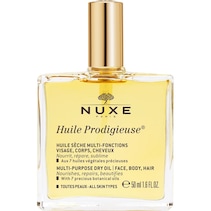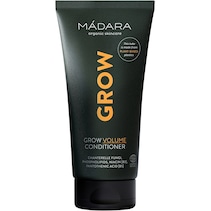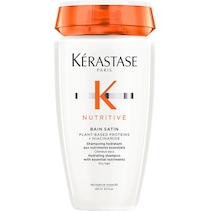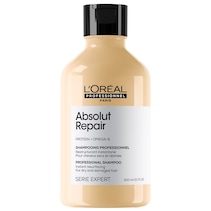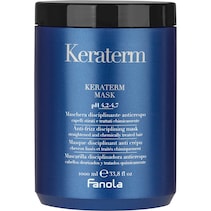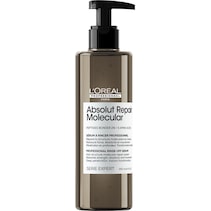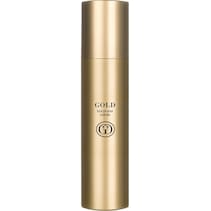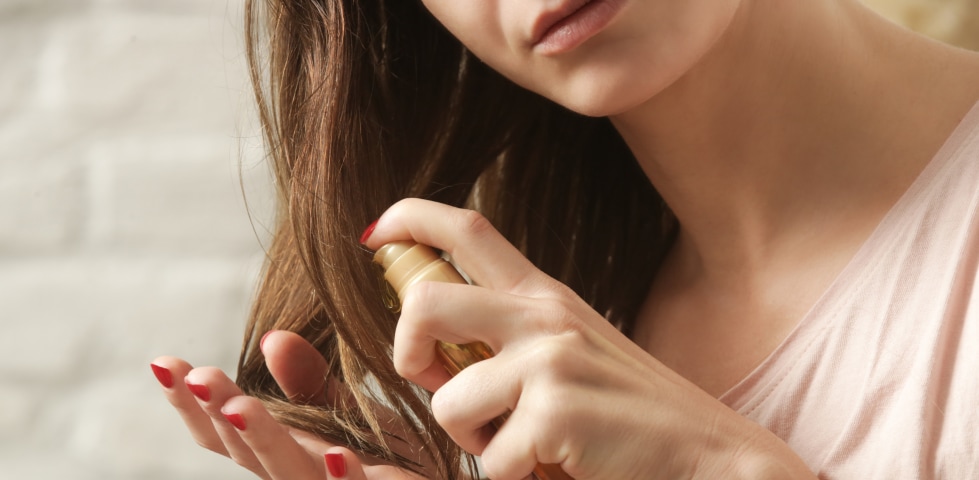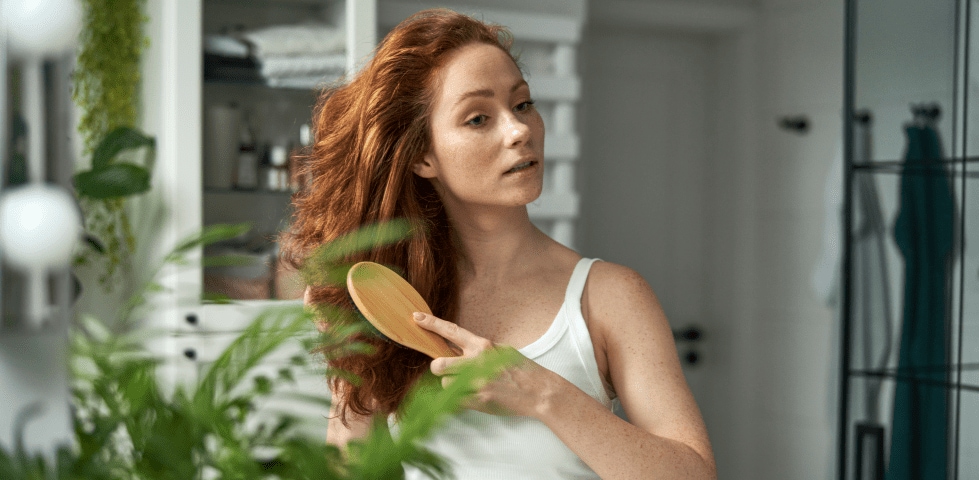
Hair porosity: how to keep your hair smooth and shiny
If you sometimes wonder why your locks are so dry or why your rich conditioner or intensive hair mask doesn’t produce the desired results, then the answer to your question could lie in the porosity of your hair. This is because hair porosity is decisive for how well the care substances can penetrate and take effect. With our tips and tricks, we show you how to determine hair porosity and adapt your care routine to your hair type.
24 October 2024
Table of contents
Hair porosity: what exactly is it?
Shiny, well-groomed hair is a beauty statement for many people. So it’s all the more annoying when a supposed miracle product fails to deliver results. However, this is often not due to the product itself. Instead, it may be that the conditioning agents do not reach the inside of the hair and therefore simply end up down the drain. This is where hair porosity comes into play. to understand hair porosity, let’s start by taking a look at the structure of an individual hair.
The anatomy of a hair
Roughly speaking, scalp hair consists of the root and the shaft. While the root is responsible for growth and anchoring in the scalp, the shaft is crucial for the conditioning effect of your products. This is because it consists of three layers: the medulla (hair marrow), the cortex (middle layer) and the cuticle (outer layer).
The cortex consists mainly of the structural protein keratin and makes up 90% of a single hair. Above this is the cuticle layer, which consists of 5–10 layers of keratinised cells and is intended to protect the inside from harmful influences. When we talk about hair porosity, we are actually looking at the angle at which the cuticle layer is arranged in relation to the cortex. The degree to which the hair cuticles protrude from the medulla can be categorised in three categories.
The levels of hair porosity
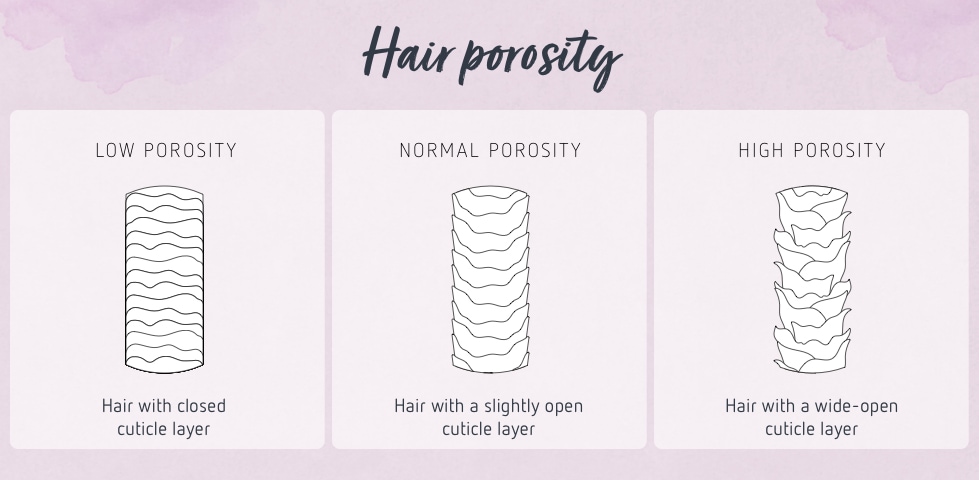
Low porosity: Your cuticles are tightly closed. Moisture can only penetrate the hair with difficulty. Instead, conditioning agents accumulate on the outside, which leads to a build-up. This is why you usually have to wash hair with low porosity more often. Due to their smooth and shiny structure, they are difficult to shape with a curling iron and rollers. They also have reduced elasticity and therefore break more easily.
Normal porosity: Your hair is in good condition, neither too loose nor too tight. It is resistant to external influences such as heat and is elastic. Nevertheless, they tend to be more brittle and build up static more quickly.
High porosity: Your cuticles are wide open. Your hair absorbs moisture easily, but loses it just as quickly. It feels rough on the skin and usually looks damaged.
Flour, water and oil: easily test the porosity of your hair
If you want to know exactly, you can either go to a hairdresser or a trichologist. This hair specialist will examine your hair under a microscope and explain everything down to the smallest detail. If this is too time-consuming for you, you can easily perform a hair porosity test at home. Below we show you four ways to determine the degree of porosity using simple methods that you can do at home. For all variants, your hair should be cleanly washed and free of residue from hairspray, gel and the like.
The water test:
You need: a glass of water and a strand of hair
Now simply dip the strand of hair into the water and wait. Does it sink immediately? If it does, you may have high porosity, as the water can penetrate the hair. Does it float on the surface for a long time? Then your porosity is probably low – hardly any moisture can penetrate inside. If the strand is balanced approximately in the centre of the glass, you probably have normal porosity in your hair.
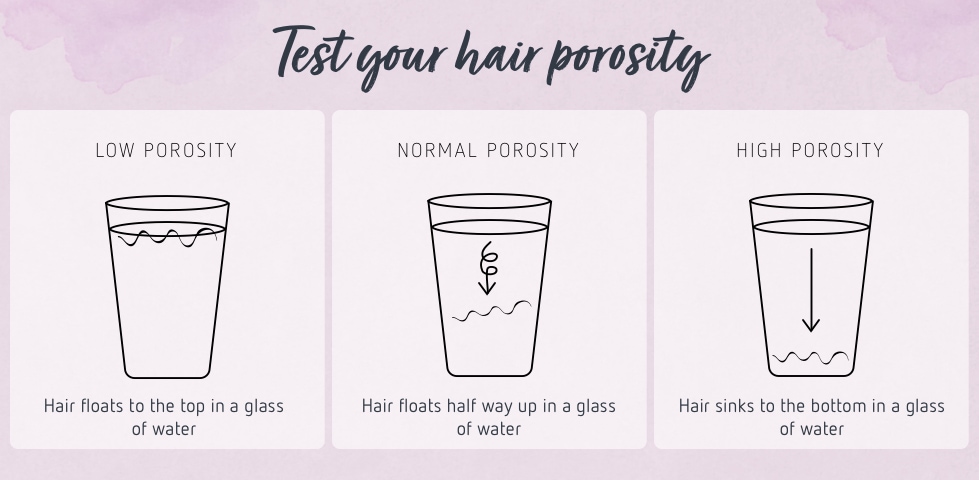
The touch test:
You need: your fingers
Close your eyes to focus completely on your sense of touch. Rub your hair between your fingers. Does it feel rough, or maybe even a little brittle? This is an indication of high porosity. If they slide smoothly through your fingers, this indicates low porosity.
The flour test:
You need: regular flour from the supermarket
Simply sprinkle your freshly washed hair with a little flour and see what happens: Does the flour stick well? If so, your cuticles are sticking out more and you probably have high porosity. If it simply falls off again, the cuticle is tightly closed. The flour cannot stick, which indicates low porosity in your hair.
The coconut test:
You need: pure coconut oil, preferably organic quality
Cover a small section of hair with coconut oil and leave it on. High porosity hair will lose its shine and appear puffy, while low porosity hair will appear shiny and smooth. With normal porosity, you will not notice any change.
Determine hair porosity and choose the ideal care product
You now know the porosity of your hair and are therefore in a position to choose the ideal care product for you to achieve perfectly styled hair. Below you will find some tips on which ingredients are ideal for you and your hair structure.
Low porosity hair products
Moisturising factors: Aloe vera, glycerin, hyaluronic acid – they bind water and help to increase overall hydration. Aloe vera and glycerin are great for retaining moisture in your hair.
Oil treatments: Heat your hair to open the cuticle. Apply moisturiser and seal with coconut oil, babassu oil or sunflower oil.
Products for low hair porosity
Products for low hair porosity
High porosity hair care
Proteins: Wheat proteins and silk proteins in shampoo and conditioner can help to strengthen and repair the hair.
Fatty alcohols: Cetearyl alcohol can lock in moisture and soften the hair.
Oils: Grapeseed oil, hemp oil and avocado oil are rich in unsaturated fatty acids. They smooth the hair by closing the cuticle.
Products for high hair porosity
Products for high hair porosity
Hair porosity: FAQs
Takeaway
Knowing your hair porosity can make a big difference to the effectiveness of your hair care routine. With a simple test, you can determine your degree of hair porosity and then choose the right products for your hair type. This will ensure that your smooth, sleek look always shines beautifully and that your curls finally get enough moisture.


